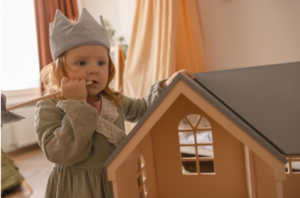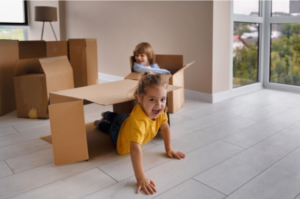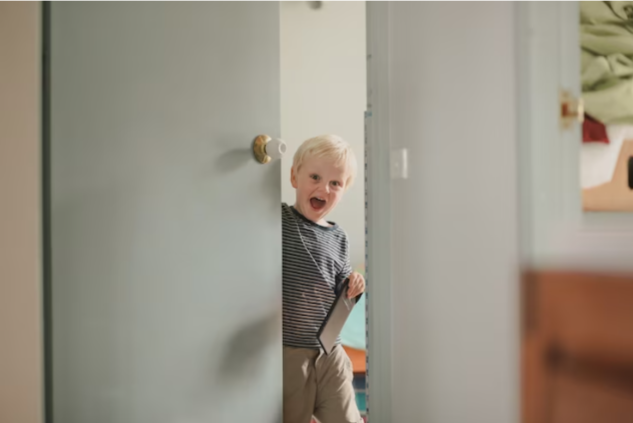Learn the most important techniques for successfully childproofing your house. Find out useful advice on how to protect your child in every room.
Introduction
An important first step in making sure your children are secure is to childproof your house. This thorough handbook covers every facet of making your home safe for kids, from locking down furniture to protecting them from common dangers.
Start by utilizing stoppers, guards, and wedges to reinforce windows. It is especially crucial to have barriers, such as fences, around swimming pools to avoid unintentional entry if you live close to water. Cabinet locks require routine maintenance and inspection. It is advisable to use high-quality locks and store dangerous materials in high-access areas.
Safety of Pets and the Outdoors
Outside spaces must also be childproofed. Look out for any potential hazards, such as jagged surfaces or uneven ground. Safe play areas can be designated with safety gates. Additionally, pay attention to how pets and kids interact, setting up secure limits, and providing monitoring. Select safety-certified cribs and place them away from windows and electrical outlets. For increased safety, cover electrical outlets and tack furniture to walls.

Keeping Appliances and Furniture from Tipping Over
It’s imperative to anchor large appliances and furniture to avoid mishaps. For freestanding stoves and ranges, anti-tip brackets are advised to prevent crushing and scalding accidents. Make sure any prescription and over-the-counter medications are kept out of the reach of youngsters by locking them up. This also holds true for household substances that might be dangerous. Establish kid-friendly areas and make sure they can participate in fun, safe activities. Keep limiting access to potentially dangerous goods such as cleaning supplies and equipment. Your safety checklist should include carbon monoxide detectors, smoke detectors, fire extinguishers, and a fire escape plan. Make sure that emergency numbers are easily accessible. As your child becomes older and more mobile, don’t forget to adjust your baby-proofing strategies to suit their evolving needs and skills.
Room-by-Room Childproofing Techniques
The Great Room: Families generally spend a lot of time in the living room, which is considered the center of the house. To avoid tilting, it is crucial to secure the TV and other equipment in this situation. To prevent tripping and tugging dangers, use cord shorteners or conceal them behind furniture. Corner guards can be used to cushion the sharp edges of furniture, preventing bruises and bumps.
There are several possible hazards in the kitchens. In addition to locking cupboards and drawers, it’s critical to use stove knob covers, keep appliance cables out of children’s reach, and make sure no small, ingested objects are nearby. Additionally, store all cleaning supplies in locked cabinets—especially those kept under sinks.
The restrooms necessitate particular consideration. To reduce the risk of drowning, lock up all cupboards that hold cleaning supplies or medications. To prevent falls, non-slip mats on the floor and in the bathtub are essential. Bath time should always be supervised to protect children.
The sleeping quarters: Be sure cribs in the bedroom adhere to the most recent safety regulations, especially for infants and young children who sleep there. To avoid tipping over, keep the crib away from drapes, windows, and electrical outlets. Additionally, make sure all furniture is fixed to the wall. To prevent pinching fingers, toy chests should either have safety hinges or no lid at all.
The laundry room and garage: These are frequently disregarded regions that are full of dangers. Make sure that all tools, car fluids, and laundry detergents are kept safely out of the way. Any additional freezers or refrigerators should be childproofed, and kids should never be left alone to play in these spaces.
The Yard: Establishing a secure play area is essential for houses with outdoor areas. Make sure gates are locked and fences are sturdy. Get rid of any toxic plants and store chemicals and gardening tools safely. Install pool guards and alarms if you have a pool for further security.
Extra Safety Advice and Things to Think About
- Make sure all safety devices are operating properly by checking them on a regular basis.
- Keep an eye out for safety alerts and product recalls pertaining to furniture and items for children.
- Inform babysitters and grandparents about your home’s safety measures and childproofing techniques.
- As your child develops and enters new developmental phases, conduct routine safety audits of your house and make any necessary adjustments to safety precautions.
Electrical Safety and Technology
It’s critical to childproof electronics and electronic gadgets in the modern digital age. Make sure all gadgets, including tablets and smartphones, are secure and properly handle wires. Make sure that modems, Wi-Fi routers, and other electronics are out of reach. To avoid tripping hazards and electrical hazards, you should also think about utilizing child-safe coverings for power strips and organizing cords using covers or clips.

Safety of Steps: Children can be seriously injured on stairs. Put in safety gates on both sides of steps. Choose hardware-mounted gates over pressure-mounted ones; the former are more secure. To avoid tripping hazards, keep toys and clutter off the stairs.
Blind cords and windows: Make sure blind ropes, which present a strangulation threat, are out of reach beyond window guards. Think about switching out your old blinds for cordless models. If replacing them isn’t an option, keep them out of children’s reach by using wind-ups or cord shorteners.
Being Ready for Emergencies: Children should be taught how to react in emergency situations. Establish a family emergency plan and practice it frequently. Make sure kids understand the basics of safety, such as their complete name, address, and parents’ names, and teach them how to call 911.
Childproofing While Traveling: Portable childproofing devices might come in quite handy when traveling or visiting other people. Keep a small kit containing corner guards, outlet covers, and mini-gates on hand. When visiting friends’ or hotels’ residences, quickly inspect the area to temporarily childproof it.
Observation and Guidance
Recall that thorough supervision cannot be replaced by any amount of childproofing. Always be aware of your children’s whereabouts, particularly in locations that could be dangerous like restrooms and kitchens. For added piece of mind, use security cameras or baby monitors, but don’t depend entirely on these gadgets for your child’s protection. Your child’s curiosity and capacity to get beyond childproofing techniques will develop as they become older. Check and update your childproofing techniques on a regular basis to take into account their developmental stage. This entails reevaluating the dangers in every room of the house and making sure all safety equipment is operational.
Conclusion
Making a home that is secure and supportive for kids requires childproofing. You may greatly lower dangers and guarantee your child’s safety and wellbeing by adopting a thorough strategy, keeping an eye on everything in the house, and remaining watchful. Recall that childproofing is an ongoing process that requires regular attention and modification as your child grows.
The process of childproofing your house is a continuous one that changes as your child does. You can provide a safe space for your child to grow while protecting them from any dangers by being watchful and regularly revising your safety plans.
The process of childproofing is continuous and changes as your child does. You may provide your child with a safe haven and ensure their wellbeing at the same time by following these instructions.
We hope you found this information helpful in your journey to create a safer environment for your family. At GuardWell Safety, we understand that every home is unique, and so are your child-proofing needs. That’s why we offer a Free Child-Proofing Consultation tailored to your specific requirements. Let our experts help you identify potential hazards and provide personalized solutions to make your home a secure haven for your little ones. Book your free consultation today and take the first step towards peace of mind.






